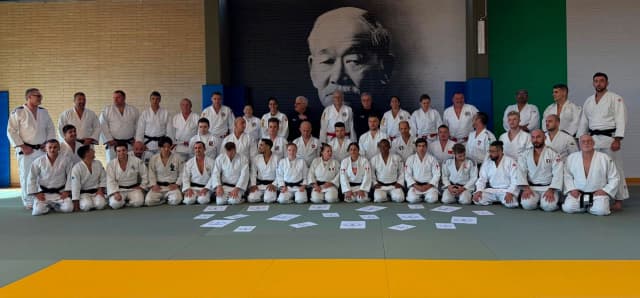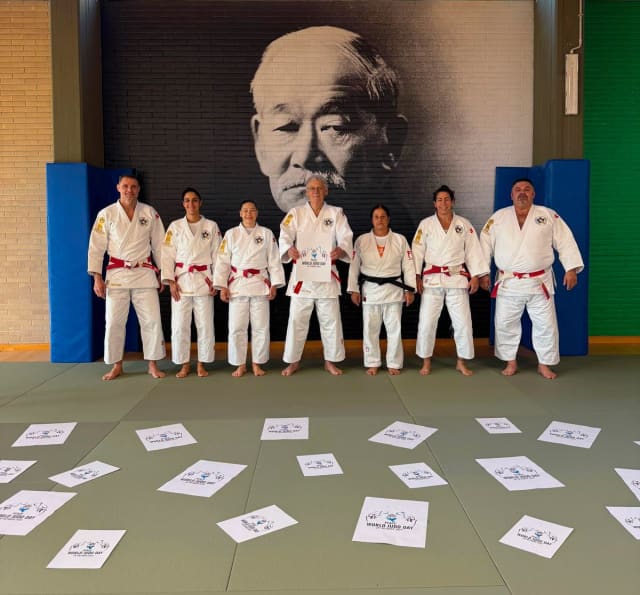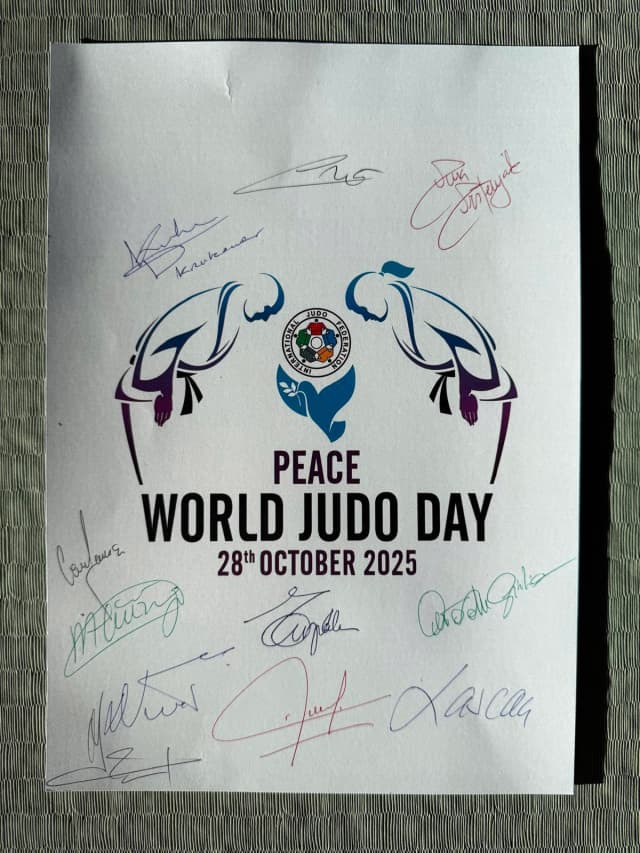The six day programme was led by an exceptional team of IJF Academy experts. Florin Daniel Lascau, Dr Slavisa Bradic, Mark Huizinga, Daniela Krukower, Giulia Quintavalle and Tina Trstenjak, a list including Olympic and world champions, guided the participants through the complete repertoire of Kodokan techniques. Over the week they demonstrated and explained each of the one hundred official Kodokan techniques of throwing, holding, choking and controlling the arm, as well as the entire Nage-no-kata. At first glance the programme seems straightforward. Every participant is a black belt who has spent years studying these techniques and who has performed the Nage-no-kata at some point in their judo life. Yet, as Mr Lascau, Sport Director of the IJF Academy, reminded the group every day, the purpose of the course is not to revisit competition judo. Instead he urged them to set aside previous habits and work again from the beginning. The aim is to understand the essence of judo, its core values and the fundamental principles that underpin every movement.
The practical sequence unfolded in a natural progression. The first day was dedicated to the basics of judo, such as the mechanics of breakfalling, movement and the understanding of direction. On this same day the participants had to take a mandatory fitness test. Depending on their age they were required to complete a series of levels which tested their physical readiness. Anyone who failed twice could not participate in the examinations at the end of the week. Days two, three and four were then devoted to an in depth exploration of the Kodokan techniques and Nage-no-kata, during which the Academy experts carefully dissected each principle so that the judoka could grasp not only how a technique works but why it works.
Each day was divided into two intensive sessions of three hours. For anyone wishing to refine their skills further, the schedule offered additional time both before and after the formal training. The experts remained available at the end of each session to answer questions or to assist those who needed extra guidance. They also adapted their expectations for participants who were managing older injuries or physical limitations. The purpose of the course was never to exclude someone based on physical ability but to support every judoka in becoming a better teacher and ambassador for the sport.
One of the oldest participants, the Italian judoka Giovanna Tortora, aged sixty, knew the week would be physically demanding; six hours of judo each day is a challenge for anyone. Yet she approached the course with enthusiasm, seeing it as an honour. Her years of coaching and her strong competitive past gave her the determination to persevere. Through the training she rediscovered how teaching judo can help a person transcend their limits both mentally and emotionally.
The final two days were dedicated to assessments. On the fifth day the participants demonstrated Nage-no-kata, performing both roles, tori and uke. Day six involved examinations in nage-waza and katame-waza. Each judoka selected random sheets that indicated which techniques they needed to perform and they needed a score of at least eighty percent in order to qualify for the Academy’s high performance coaching course. Those who did not pass on the first attempt were given a second chance the same day. The examinations were never designed to trap the judoka but relied upon prior study and sincere preparation.
Among those who excelled was Vasile Victor Ciocoiu, originally from Romania and now running a judo club in the United States. He approached the course as a personal mission to honour his teachers and to set an example for his students. Though he graduated at the top of the group, he said that the depth of the content made him more aware of how much he still wished to learn. Beth O Connor, a physical education teacher from the United Kingdom and one of the youngest attendees, described the training as demanding but immensely rewarding, offering both technical and personal development.
Many participants, including Tortora, Ciocoiu and O Connor, spoke warmly about the experts who taught them. They praised their patience, their deep knowledge and their willingness to help, both during and after the sessions. The environment created by the instructors was constructive, inclusive and inspiring.
At the close of the week Mr Lascau summarised the purpose of the course. The practical programme exists to teach how judo should be introduced at its most basic level, especially to children, who represent the future of judo as both a martial art and a sport.
Source: Mr John Sebastian, USA



